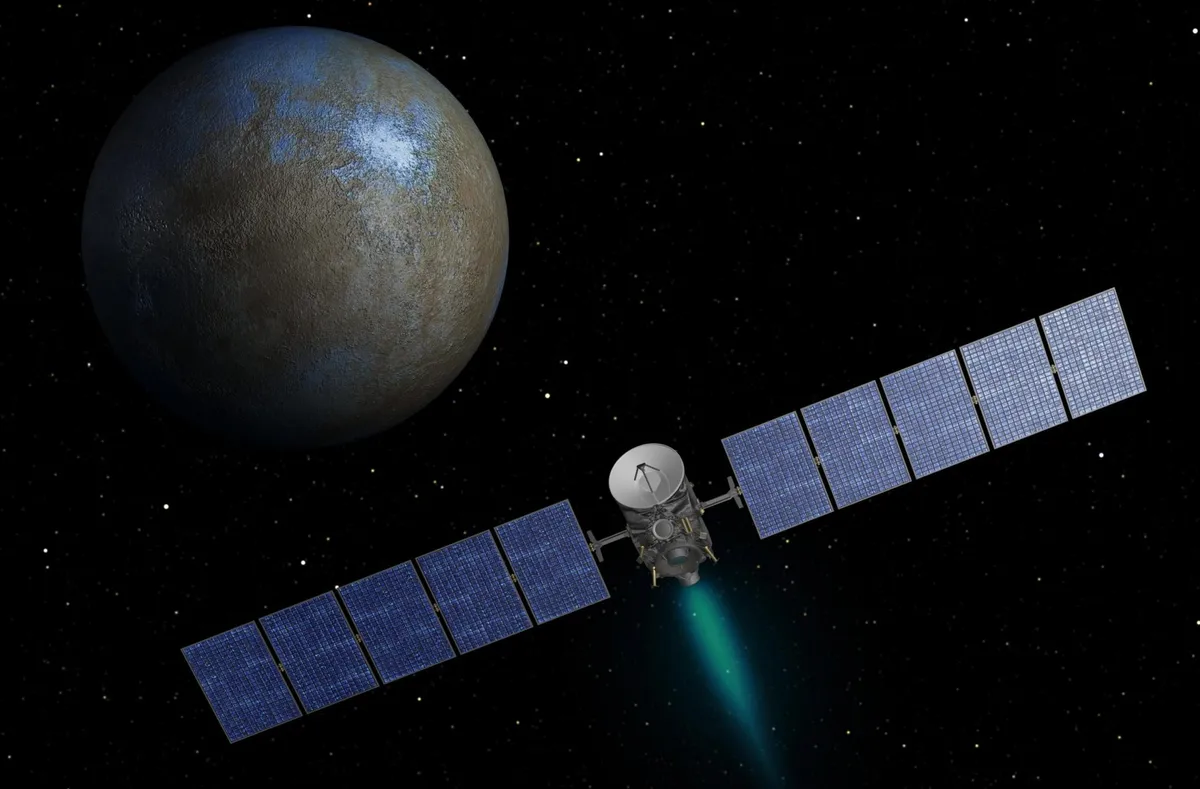Designing a space mission is a balancing act, there are lots of different constraints to find an optimum solution for a spacecraft’s trajectory. To keep interplanetary journey times short, you initially want to propel a spacecraft away from Earth as fast as possible.
But whatever the launch vehicle, the faster this initial throw the smaller and lighter the space probe has to be, which limits the amount of scientific instruments and fuel it can carry.
And in order for your mission to be captured into orbit around Saturn, for example, you have the problem of how to slow the probe down again when it arrives, because the outer planets circle the Sun far slower than Earth does.
Read more from Lewis Dartnell:
- Could an exoplanet's atmosphere indicate the presence of life?
- Is it possible to make a map of an exoplanet?
- Could exoplanets host a global electric current?
The Cassini–Huygens probe used a big rocket burn to brake into Saturn’s orbit, but manoeuvres like this require a huge amount of fuel, which then makes your probe very heavy to launch.
Traditionally, spaceflight has relied on chemical rockets. These can deliver an enormous thrust but require a huge mass of fuel and can only be used in short bursts.
More missions are now using electric propulsion systems. These produce only a gentle push but are extremely fuel efficient and can be operated for months at a time.
For example, NASA’s Dawn, JAXA’s Hayabusa and ESA-JAXA’s BepiColombo missions have all exploited this technology.

Elena Fantino, at Khalifa University of Science and Technology, Abu Dhabi, and her team have been investigating how such electric thrusters can be used to optimise the interplanetary route used for sending probes to Saturn, or beyond.
How do you keep the launch mass as low as possible, while keeping a relatively quick journey time, and not arriving at Saturn too fast?
Fantino based her studies on the propulsion capabilities of the NASA Evolutionary Xenon Thruster – Commercial (NEXT-C), and a route to Saturn that uses a Jupiter fly-by for gravity assistance.
The best solution she found is for the electric propulsion to accelerate the space probe from Earth to Jupiter as quickly as possible, but then once past Jupiter the probe constantly re-orientates to use its thruster to brake and match the planet’s velocity.
The probe is then moving slowly enough relative to Saturn that it can finally be captured into orbit using a single fly-by of Titan, or perhaps even novel technologies like an ‘electrodynamic tether’ which effectively digs its heels in against a planet’s magnetic field.
The Cassini-Huygens launch mass was 5.6 tonnes – much of which was rocket fuel – and it got to Saturn after fly-bys of Venus (twice), Earth and then Jupiter. Using Fantino’s new trajectory optimised for electric propulsion en route, transit time is longer, but she calculates that future probes could be as small as just one tonne and far cheaper.
And this opens up the possibility of launching a whole cluster of probes to explore an outer planet like Saturn at the same time.
Prof Lewis Dartnell is an astrobiologist at the University of Westminster.Lewiswas reading Reduction of Saturn Orbit Insertion Impulse using Deep-Space Low Thrust by Elena Fantino et al. Read it online at: https://arxiv.org/abs/2001.04357.

